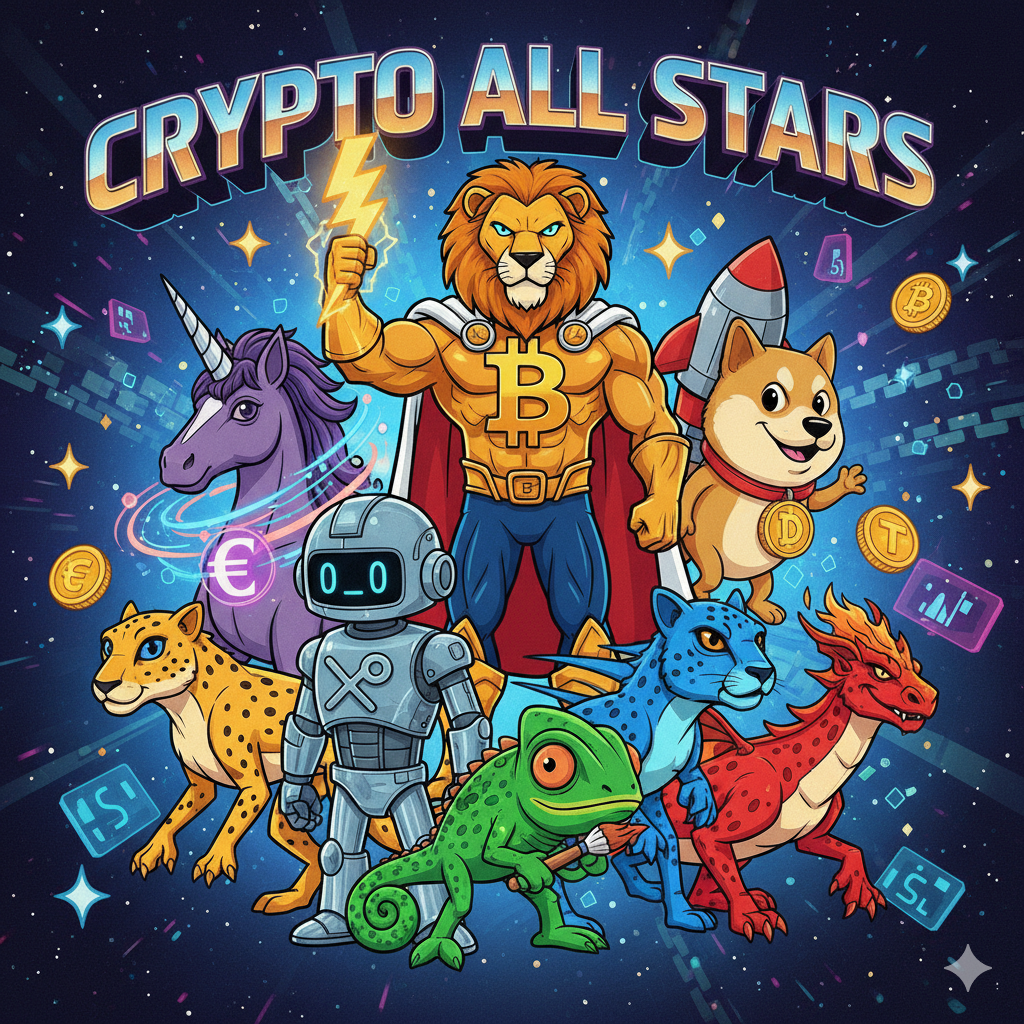Crypto All-Stars: The Key Players Shaping the Future
The digital revolution of finance is not a faceless movement. While blockchain technology is decentralized, its trajectory is being powerfully shaped by a dynamic cast of visionaries, developers, institutional giants, and artists. These are the Crypto All-Stars, the key players whose decisions, innovations, and convictions are building our future economic systems. To understand where crypto is headed, we must therefore look beyond price charts and examine the influential forces driving this paradigm shift.
The Founding Pioneers: The Architects of Trust
Any discussion of Crypto All-Stars must begin with the pseudonymous founders. Satoshi Nakamoto, the creator of Bitcoin, remains the ultimate enigma. By solving the double-spend problem without a central authority, Nakamoto gifted the world a new form of digital gold. This foundational breakthrough, consequently, inspired the next wave of pioneers.
Vitalik Buterin, the co-founder of Ethereum, stands as a titan among these pioneers. His vision of a programmable blockchain, a “world computer,” expanded the technology’s potential far beyond simple transactions. Ethereum introduced smart contracts, which are self-executing codes that enabled decentralized applications (dApps), decentralized finance (DeFi), and non-fungible tokens (NFTs). Buterin’s ongoing influence on Ethereum’s development, especially its transition to proof-of-stake, continues to guide the entire industry. Alongside him, figures like Charlie Lee (Litecoin) have carved out essential niches, proving the versatility of blockchain.
The Institutional Adopters: Bridging Two Worlds
For years, crypto existed on the fringes of traditional finance. Today, however, a new class of Crypto All-Stars is emerging from Wall Street and global corporations. These players are critical for providing the legitimacy, liquidity, and infrastructure needed for mass adoption.
Companies like BlackRock and Fidelity are prime examples. Their successful launch of spot Bitcoin ETFs marks a watershed moment. This move grants millions of traditional investors easy, regulated exposure to Bitcoin. Consequently, it not only validates Bitcoin as a legitimate asset class but also funnels trillions of dollars of potential institutional capital into the ecosystem. Similarly, payment giants like PayPal and Square are integrating crypto into their platforms. They are bringing digital assets to vast user bases and normalizing their use for everyday commerce.
These institutional Crypto All-Stars act as essential bridges. They translate the complex language of blockchain into a dialect the traditional financial world understands and trusts. Their involvement mitigates risk for cautious investors and creates a more stable market. While their goals may be more profit-driven than ideological, their impact in scaling the technology is undeniable.
The DeFi Innovators: Engineering a New Financial System
Beyond the founders and institutions lies a vibrant ecosystem of builders. These are the engineers of the new digital economy. Specifically, they are the developers behind groundbreaking DeFi protocols like Uniswap, Aave, and Compound. They have created a parallel financial system where users can lend, borrow, and trade assets without intermediaries like banks. By open-sourcing their code and often relinquishing control through decentralized autonomous organizations (DAOs), they embody the core ethos of the movement. Furthermore, they are pushing the boundaries of what is financially possible.
The NFT Creators: Redefining Digital Culture and Ownership
In the cultural sphere, artists and project founders have become a different kind of celebrity. Projects like CryptoPunks, Bored Ape Yacht Club, and Art Blocks have created new digital asset classes. More importantly, they have forged powerful communities and new models for creator royalties. These cultural Crypto All-Stars are demonstrating how blockchain technology can redefine ownership, identity, and value. Their impact is now felt everywhere from art and music to gaming and virtual worlds.
The Regulatory Vanguard: Setting the Rules of the Game
No analysis would be complete without acknowledging the regulators. Figures like Gary Gensler, Chairman of the U.S. SEC, wield immense power over the industry’s future. While often viewed with skepticism, regulators are undeniably key players. Their approach—whether creating clear frameworks or pursuing aggressive enforcement—will determine the speed of crypto’s integration into the global economy. They are the referees; as a result, their decisions will either unlock innovation or stifle it.
Conclusion: A Collaborative, Contested Future
The future of crypto is not being written by a single entity. Instead, it is a complex collaboration between idealistic pioneers, profit-driven institutions, ingenious builders, creative artists, and cautious regulators. Together, this diverse group of Crypto All-Stars is engaged in a grand experiment to re-architect our global systems. Their collective actions and competing interests will determine if this technology fulfills its promise of a more open and equitable digital future. Therefore, watching these key players is essential for anyone who wants to understand what comes next.
Q1: What the heck even is cryptocurrency?
Think of it as digital money on a digital ledger, but with a twist: no central bank, no government, no single company controls it. It’s a peer-to-peer system built on a technology called blockchain—a transparent, secure, and unchangeable digital record book that everyone can see but no one can tamper with.
Q2: Okay, but what’s “blockchain”? Is it just for crypto?
Blockchain is the star quarterback; cryptocurrency is just one play in the playbook. A blockchain is a decentralized digital ledger that records transactions across many computers. Once a “block” of data is added, it’s nearly impossible to change, creating a chain of trust (hence, block-chain). Its uses go far beyond money, into supply chains, voting, digital art (NFTs), and more.
Q3: What does “DeFi” mean?
DeFi stands for Decentralized Finance. It’s the mission to rebuild the traditional financial system (banks, loans, insurance) on open, blockchain-based networks. Instead of using a bank for a loan, you might interact directly with a piece of code (a smart contract) on the blockchain. It’s finance, but without the middlemen.
Q4: And “Web3”?
Web3 is the bigger vision. Web1 was read-only (static web pages). Web2 is read-write (social media, where big tech companies own the platforms and your data). Web3 is read-write-own. It envisions an internet where users own their data, their digital assets, and govern the platforms they use through tokens and DAOs.

